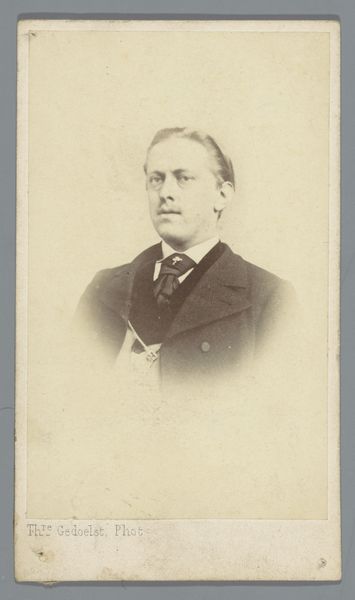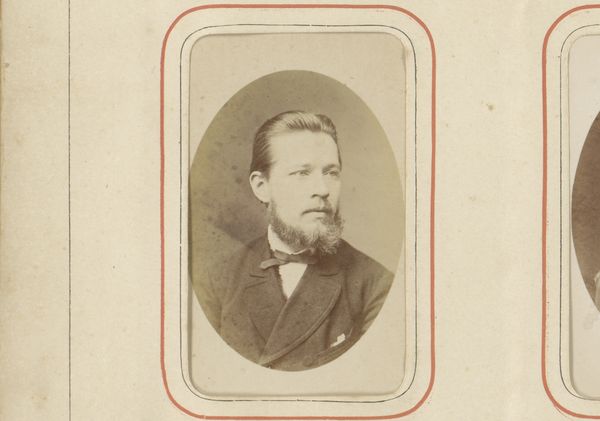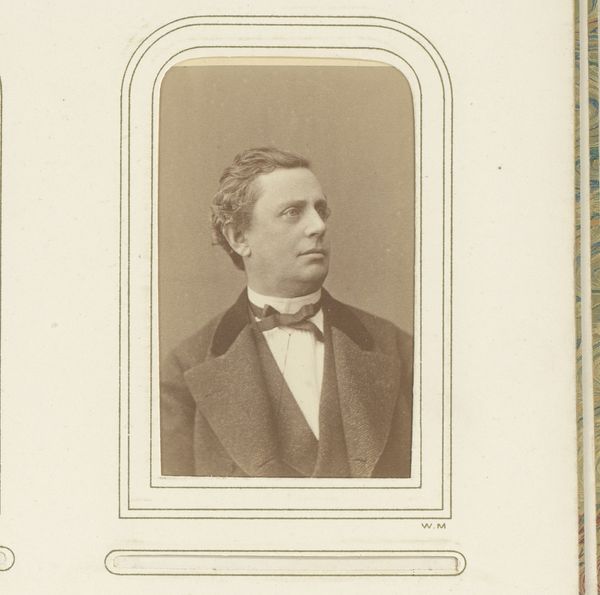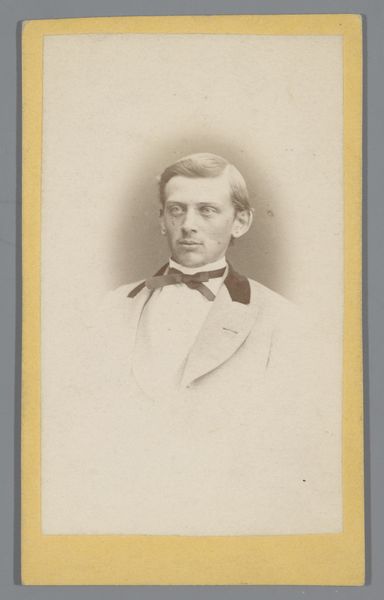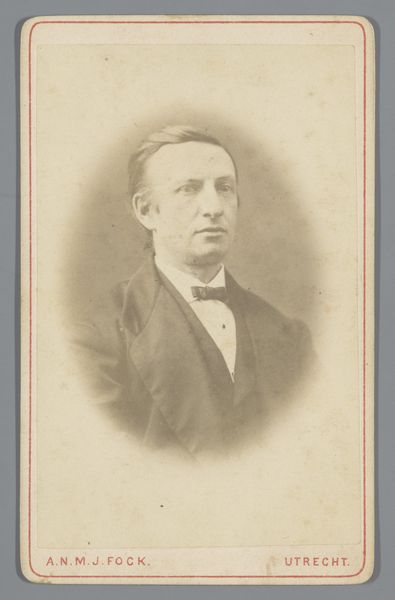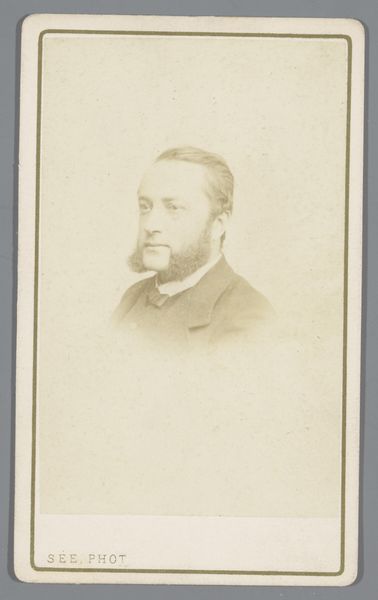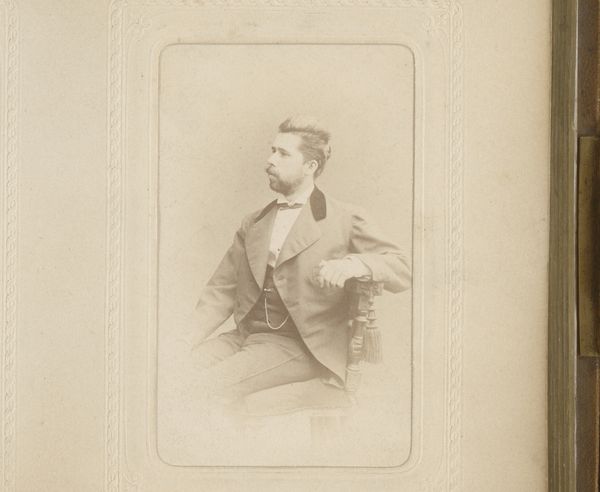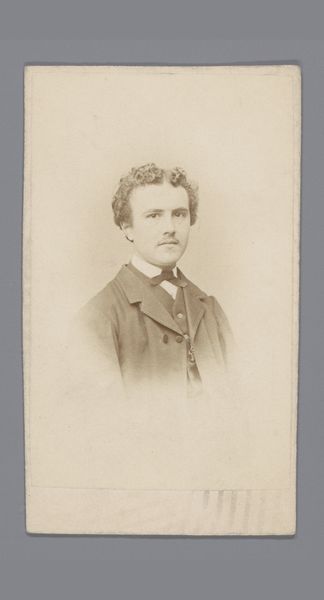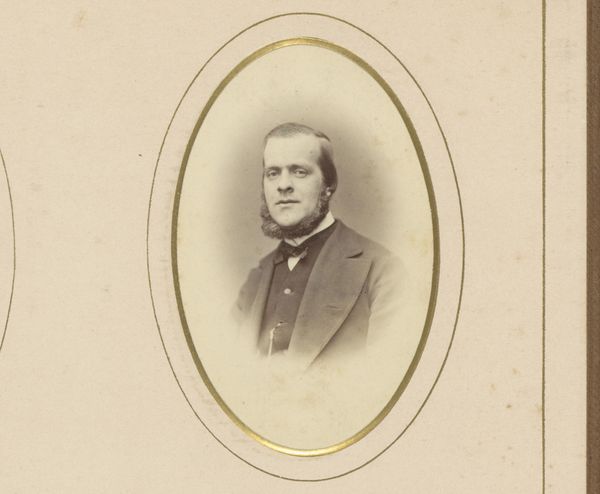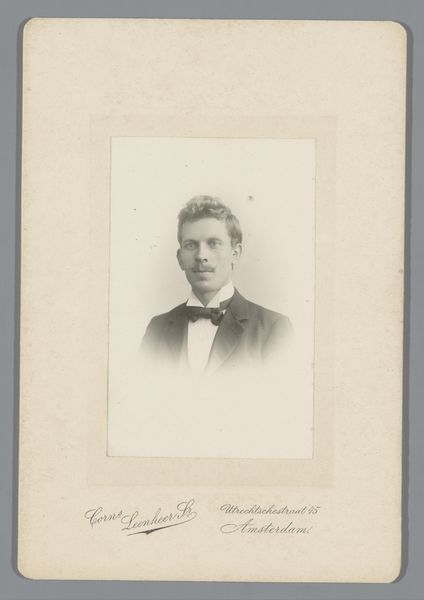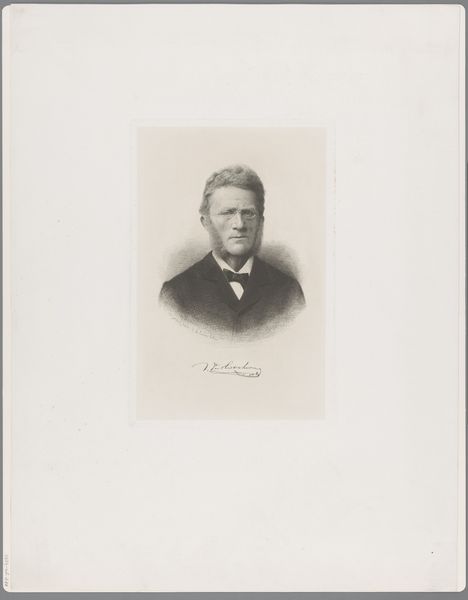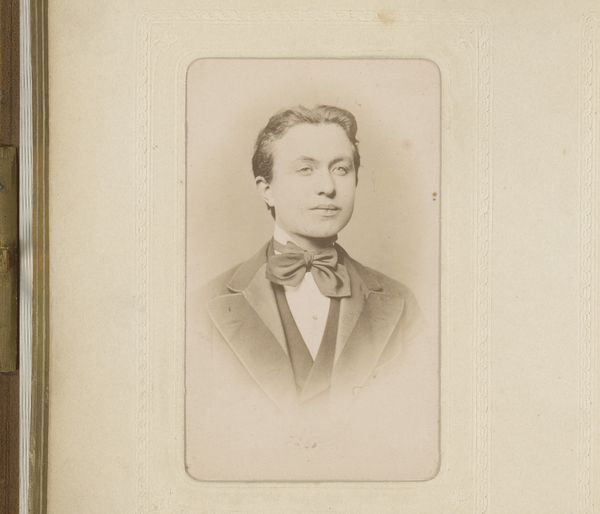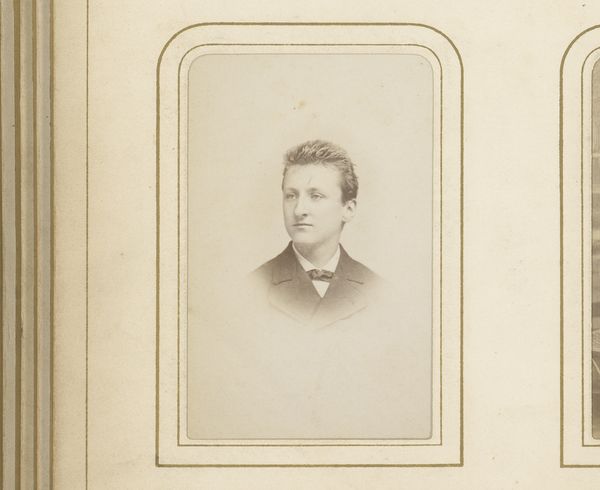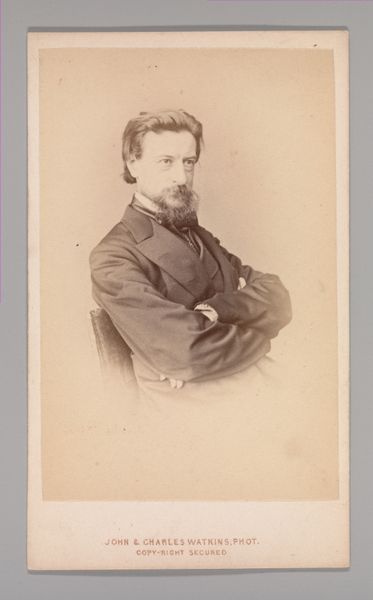
photography, gelatin-silver-print
#
portrait
#
photography
#
gelatin-silver-print
#
realism
Dimensions: height 103 mm, width 60 mm
Copyright: Rijks Museum: Open Domain
Curator: Here we have an intriguing portrait from the late 19th century. "Portret van een onbekende jonge man," dating approximately 1860 to 1880. The piece is a gelatin-silver print. What are your first thoughts? Editor: It's incredibly soft, almost dreamlike. The way the light renders the subject… the lack of stark contrast softens his features, gives him an air of gentle melancholy, wouldn't you agree? The palette itself feels constrained, which emphasizes texture. Curator: Precisely. The gelatin-silver process lends itself to that tonality, that limited but rich spectrum of greys. Focus on the formal elements—the strong profile, the way the plain background accentuates the line of his jaw, and how the light falls softly. It directs the viewer's eye. Editor: I’m struck by how the process dictates the image. Silver gelatin was cheaper and thus accessible to a wider swathe of the public in comparison to other forms of photography. He is relatively well-dressed. But the sitter remains "unknown". Was the creation of photography driving a boom in the economy? Who were these portraits for? Who processed them in the dark room? What did the equipment look like? The surface seems smooth: were such prints labor intensive? Curator: You raise interesting materialist questions about the social and economic context. While the democratization of image-making through photography is important, consider how the photographer uses composition and light to convey something universal. This image's strength comes from its austere form. Editor: Form follows process, and process comes out of a particular time! I’m thinking about the silver itself—the economic realities of silver mining, processing, printing... It all connects the aesthetic experience to labor. Even his clothing is carefully arranged: what materials are in the garment, the cut. This informs how he, as the subject, wants to be seen. It gives this image historical context, it’s not just in the shape of things, but what created them. Curator: Granted. The textures hint to that wider scope, it is an integral part of the narrative. But what do you suppose our ‘unknown man’ represents as an archetypal figure in his time, a certain striving captured and then solidified by realism of early portrait photography? Editor: Well, that brings us back to production and materiality again. What’s been presented in portrait and how is its physical representation made available to people. To see an object for what it can convey but also what it is – materially. That’s how this ‘unknown man’ comes to have a broader reach, both for those from then and to us in our now. Curator: A meeting of the eyes across history made of emulsion, chemicals, paper and a yearning. A worthwhile point on which to leave the image.
Comments
No comments
Be the first to comment and join the conversation on the ultimate creative platform.
